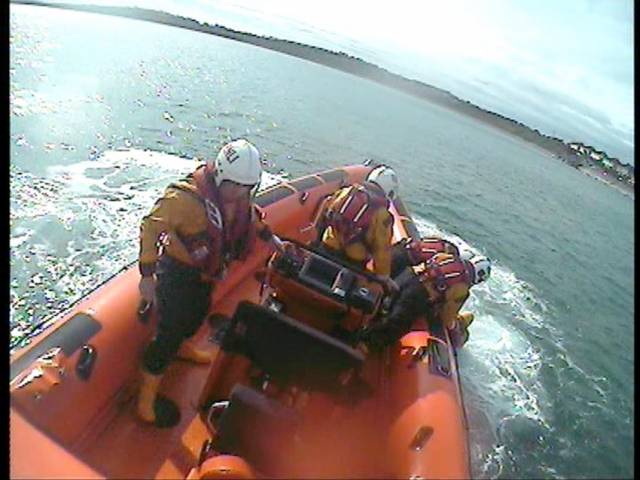#RNLI - Skerries RNLI rescued a swimmer in difficulty yesterday afternoon (Tuesday 11 April) after he encountered a strong tide near Shenick Island and was unable to make his way ashore.
Dublin Coast Guard tasked Skerries RNLI shortly before noon after receiving an emergency call from a member of the public who had spotted a swimmer struggling to make any progress against the tide at the island off Skerries.
Volunteers launched the Atlantic 85 inshore lifeboat Louis Simson, with David Knight at the helm and crew Philip Ferguson, Joe May and Laura Boylan.
The lifeboat proceeded to the area indicated by the caller, where an Irish Coast Guard helicopter had also arrived on scene. They took the male casualty on board the lifeboat, protected him from the elements, and began first aid assessments as they made their way back to the station.
The casualty had swallowed seawater during his efforts to swim to shore and as a result, on the advice of the crew, he was transferred by ambulance to hospital for further assessment.
Speaking after the callout, Skerries RNLI lifeboat press office Gerry Canning said: “We’ve had a couple of tidal-related incidents in the last few days. We’d just like to remind people that the strength and height of the tide varies throughout the month.
“We would strongly recommend checking tide tables before engaging in any activity on or near the sea.”
































































